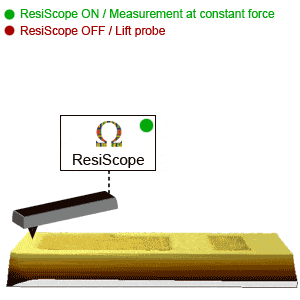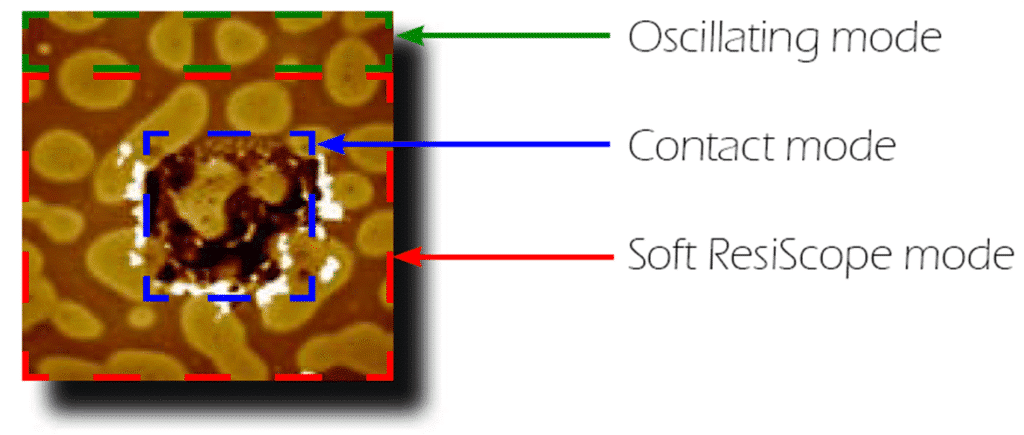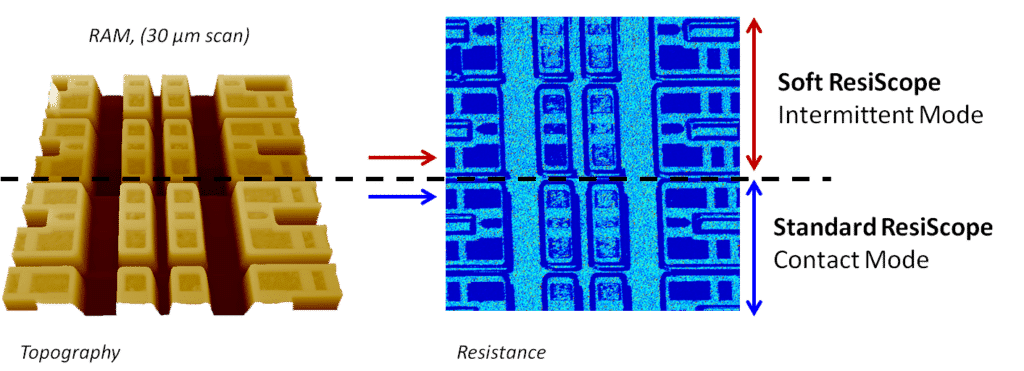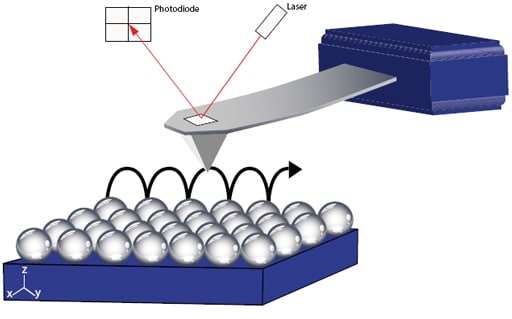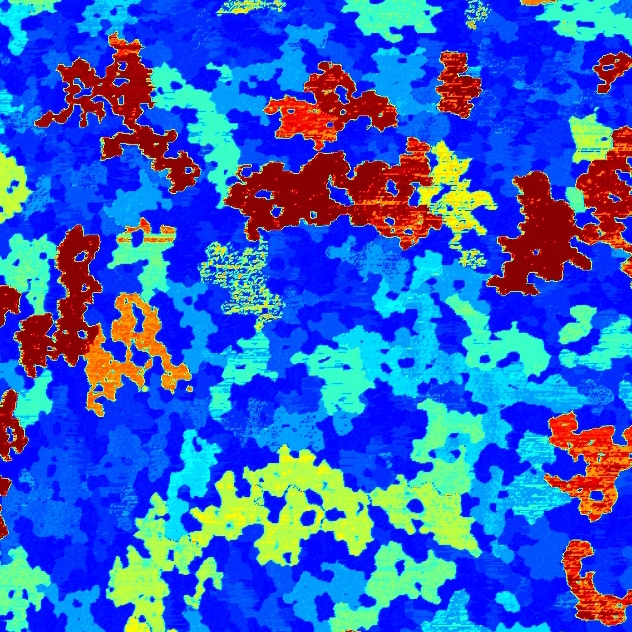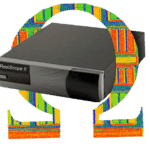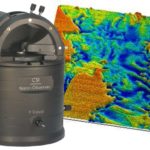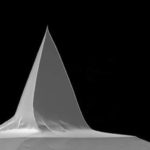True Quantitative Resistance/ Current Measurements with Intermittent Contact for soft materials
The Soft ResiScope principle is based on intermittent contact. The AFM probe only stays in contact with the sample during a short period of time with a constant force control which allows the ResiScope II to measure the resistance and the current in the best conditions for quantitative measurements. Then the tip is retracted and moves to the next step.

